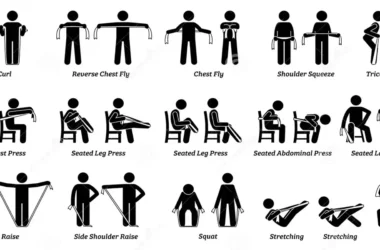Block vertebrae is when two or more vertebrae are fused. It’s present from birth and can cause pain and reduced range of motion. Treatment may include medications, physical therapy, or surgery.
Your spine provides structure and support for your body. It also protects your spinal cord and spinal nerves from injury.
The spine is made up of 33 bones called vertebrae. Twenty-three intervertebral discs separate the vertebrae, providing cushioning and acting as shock absorbers.
Some people can be born with several vertebrae that are fused together. This is called block vertebrae.
This article reviews block vertebrae in more detail, including symptoms, causes, and treatment options.
What are block vertebrae?
Block vertebrae happen when two or more vertebrae in your spine are fused together. The fusion can happen at the body of the vertebrae (ventral), at the arch of the vertebrae (dorsal), or both.
The most common area to have block vertebrae is in your cervical spine, which makes up the bones of your neck. It can also affect the vertebrae in your thoracic spine (torso) and rarely those in your lumbar spine (lower back).
What are the symptoms of block vertebrae?
Some of the potential symptoms of block vertebrae include:
- neck or back pain, which often becomes worse when you shift your posture
- reduced range of motion at the site of the fusion
- a visible deformity of the spine, such as an abnormal spinal curvature
- muscle weakness
- sensory problems, such as numbness or tingling sensations
What causes a block vertebrae and who’s at risk?
Block vertebrae is a congenital condition. That means that it’s present from birth.
During development in the womb, what will eventually become the spine forms around the early spinal cord. Individual vertebrae are then formed through a process called segmentation.
Block vertebrae happens when segmentation doesn’t occur properly. The result is two or more vertebrae that are fused together.
It’s unknown exactly why some people are born with block vertebrae while others are not. However, it’s associated with other congenital conditions like Klippel-Feil syndrome and some types of achondroplasia.
It’s also important to point out that vertebrae fusions can also be acquired during your lifetime. This can occur due to the effects of health conditions like juvenile rheumatoid arthritis or a spinal fusion surgery.
How are block vertebrae diagnosed?
Block vertebrae is diagnosed using imaging. The types of imaging technology that may be used include:
- X-rays
- computed tomography (CT) scan
- magnetic resonance imaging (MRI) scan
Using imaging, a doctor can see that two or more vertebrae are fused together. The height of the block vertebrae is typically equal to or greater than that of the individual vertebrae and their associated intervertebral discs.
Other features observed with imaging can also distinguish block vertebrae. Intervertebral discs may be basic or smaller in size. Wasp-waist sign, a narrowing of the vertebrae at the site of the fusion, may also be seen.
How are block vertebrae treated?
The type of treatment that you receive for block vertebrae can depend on whether you have symptoms and, if so, how severe they are.
It’s possible that the biomechanical changes due to the fusion may lead to degenerative changes at surrounding vertebrae, causing complications like spinal stenosis, a narrowing of the spinal canal.
Some potential treatment options may include one or a combination of the following:
- medications to ease pain
- local procedures for pain management, such as bracing, anti-inflammatories
- physical therapy to help with pain reduction, posture, and strength
- surgery to stabilize the affected area or correct spinal deformities
Takeaway
Block vertebrae happens when two or more of your vertebrae are fused together. It most often affects the vertebrae in the neck, although it may occur in other parts of the spine as well.
The potential symptoms caused by block vertebrae can include pain, reduced range of motion, and spinal deformities. The effects of block vertebrae may lead to degeneration of adjacent areas of the spine, resulting in complications.
For some individuals, conservative treatment with medications and physical therapy may be enough to manage symptoms. For others, surgery may be recommended to prevent complications and improve quality of life.



